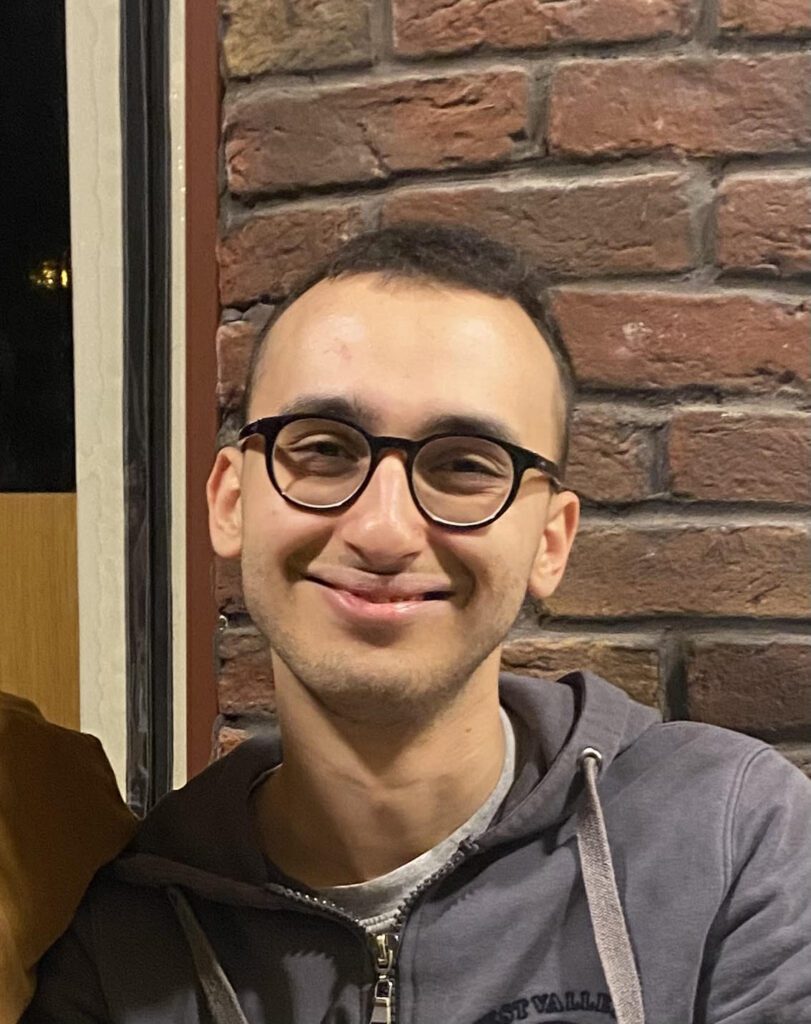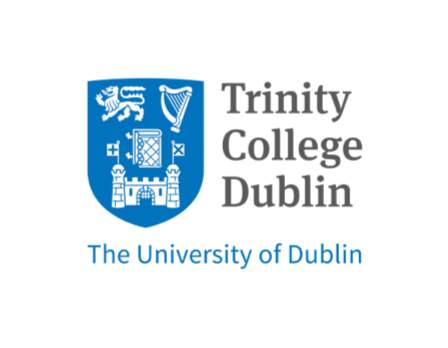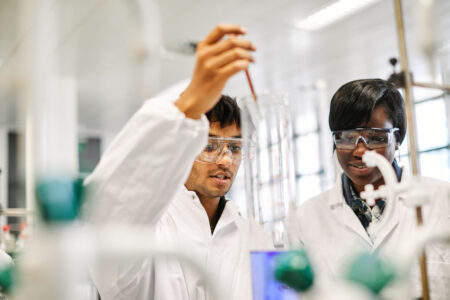Originally from Istanbul, Mert Can Ozarpaci first chose to study at Trinity College Dublin because it offered the unique BA Honours Degree in Chemistry with Molecular Modelling. He found the fusion of theoretical knowledge with practical applications “incredibly valuable.”
“The programme emphasised understanding complex molecular systems using computational and experimental techniques,” he says. “The hands-on experience in computational labs and access to advanced software for molecular modelling was pivotal in shaping my problem-solving and analytical skills.”
Having access to Professor. Valeria Nicolosi and other leading scientists inspired and motivated him further. Prof. Nicolosi is a leading expert in nanomaterials and energy storage. Their cutting-edge research and innovative approaches encouraged him to think creatively and pursue interdisciplinary research – so much so that after earning his undergraduate degree, he stayed on pursue a PhD.
Supervised by Dr. Christopher Chris Batchelor-Mcauley, who specialises in electrochemistry and environmental sensing, Mert now uses computer programmes to study how chemicals behave during experiments where electricity flows through them. “This helps us understand chemical reactions in a more detailed and faster way than traditional lab experiments,” he says. “It’s a mix of chemistry, maths, and coding, which I really enjoy!”
Trinity’s School of Chemistry has a long history, dating back to 1711. Today, it is part of a university ranked 75th in the world (2026 QS World University Rankings) and a research-intensive powerhouse with an annual research income of approximately five million euros. Amongst this diverse, strong, and dynamic research community, Mert found a vibrant place to study and prepare for his future career.

“Trinity’s strong reputation in cutting-edge research and its supportive environment for postgraduate studies made it the perfect choice for me,” says Mert Can Ozarpaci from Türkiye. Source: Trinity College Dublin
Cutting-edge research meets world-class education
Some of the best minds in chemistry work at Trinity. Professor Nicolosi is recognised worldwide for her contributions to materials science. As Professor of Nanomaterials and Advanced Microscopy, she has secured over 25 million euros in funding in the last decade and remains Ireland’s only seven-time European Research Council awardee. Her group recently developed a method to produce batteries that are compact, inexpensive, scalable for industry, and capable of fast charging with 250% higher energy density than current technologies.
Professor Joanna McGouran is another example of Trinity’s dedication to practical impact. She developed a method to study enzyme activity using in situ activation. This technique enables chemical probes to act only when needed, opening new possibilities for therapeutic development and providing scientists with precise control over biological processes.
Specialising and thriving in chemistry
Recent changes to the course structure mean that all chemistry students now enter through the Chemical Sciences stream (TR061). During the first two years, students explore a range of subjects before selecting a specialisation in their third year. In the final year, students complete a 12-week capstone project which requires a significant level of independent research. This pathway leads to a final degree in Chemistry, Chemistry with Biosciences, Chemistry with Molecular Modelling, Medicinal Chemistry, or Nanoscience.
Unlike Mert, who favoured Chemistry with Molecular Modelling, Siyao Wu, a student in the honours degree in Chemical Sciences, chose Medicinal Chemistry. “It was exactly what I was hoping to learn — drug development, synthesis, their interaction with the body, and more,” she says. “The lecture’s contents were beyond my expectations and went into detailed explanations without becoming boring.”

After graduation, Siyao is confident she would enjoy research focused on novel drug synthesis or improving existing methods. Source: Trinity College Dublin
Small class sizes at the School of Chemistry ensure that students have direct access to experts throughout their time here. These scientists lead nationally- and internationally-funded projects studies and projects, which take place at the Trinity Biomedical Sciences Institute, the 40 million euro AMBER (Advanced Materials and BioEngineering Research) Centre, and beyond.
Seeing them in action drives Siyao to aim for a future career in science. In recent Medicinal Chemistry lectures, her class explored the full journey of drug development — from identifying a target to releasing a medicine on the market – using many real-world examples. “This helped me a lot in seeing the connection of what I’m learning now to what I can do in the future, and it really motivated me to try and understand the material better,” she says.
Meanwhile, her female professors serve as powerful role models. “In chemistry, in particular, many of the classical textbook examples came from male scientists, hence learning from female professors and seeing their accomplishments is very encouraging to me,” she says.
David Emanuel Elcock, a first-year Chemical Sciences student, is just as impressed. To him, staff here “stand out in their eagerness to teach chemistry.” “The staff are welcoming to students curious about research. For example, fellow students and I got a 15-minute tour in one of the chemistry spectroscopy labs by staff who invited us after we showed interest,” he says. “Likewise, I got to see the college’s herbarium after showing interest in their calabash exhibition. Even my personal tutor showed me his research lab when I first met him.”
Learn more about Trinity College Dublin’s School of Chemistry.
Follow Trinity College Dublin on Facebook, Instagram, X, YouTube, and LinkedIn.













